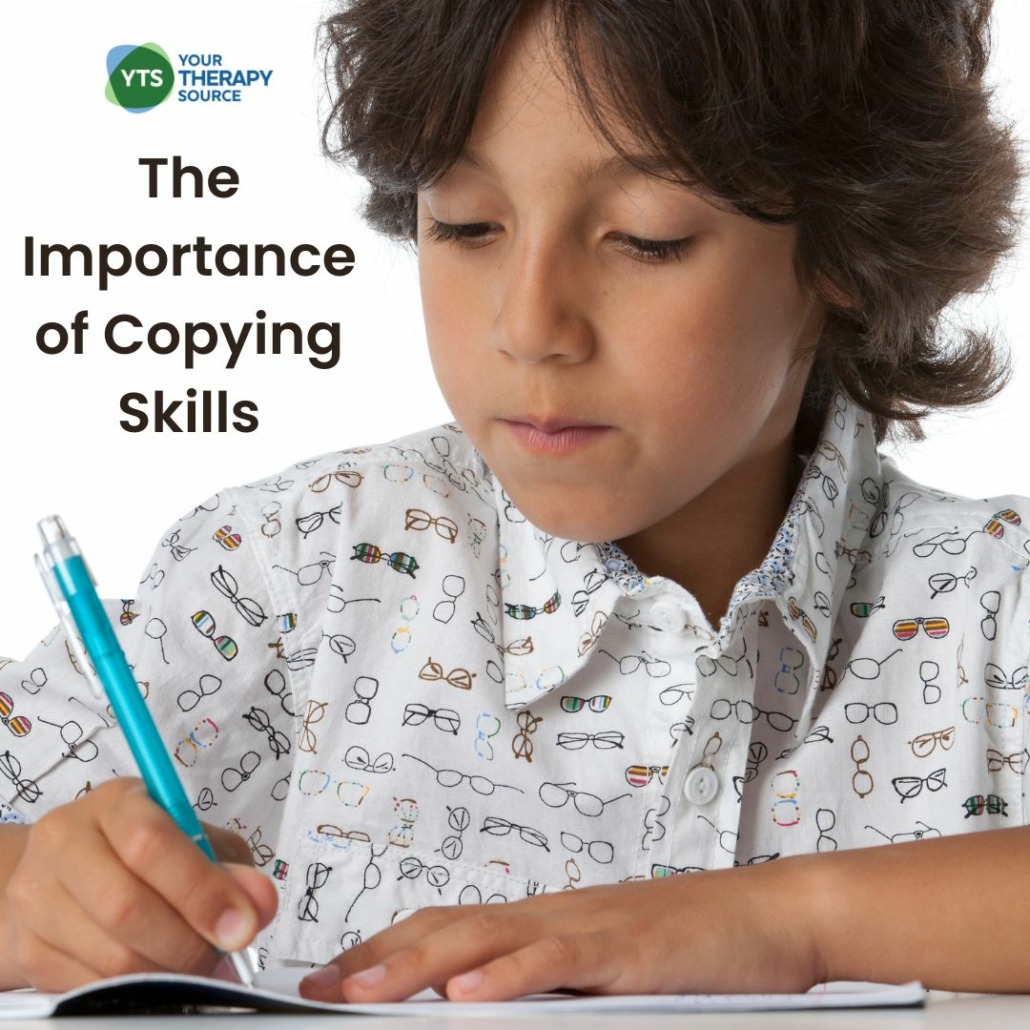Copy Skills and Learning Disabilities
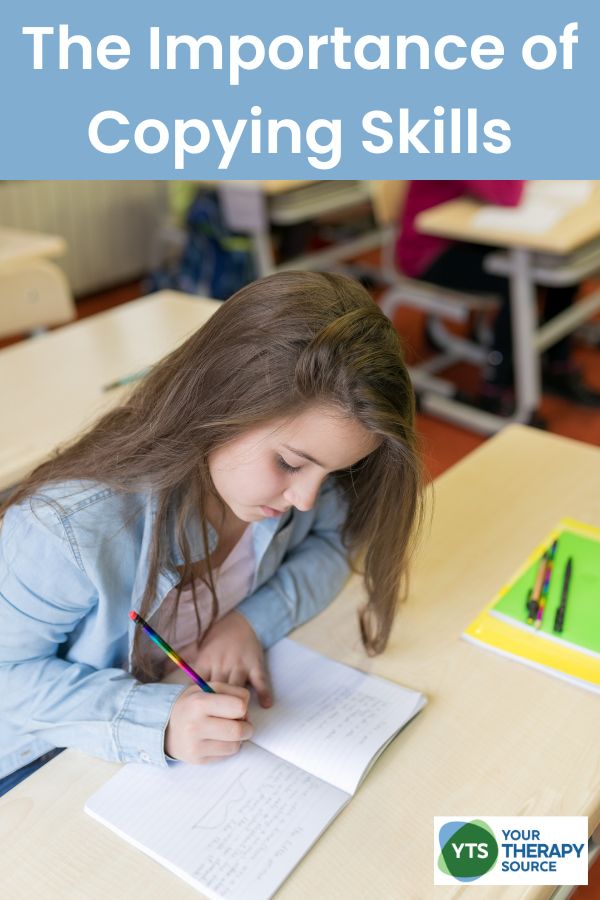
School environments regularly challenge students to undertake a plethora of tasks that require their utmost attention and ability. One such task that may seem mundane yet is of utmost importance is the ability to copy words or texts efficiently. This skill, though often overlooked, plays a significant role in the academic performance and daily life of students, especially those with learning disabilities. A recent research study looked closer at copy skills and learning disabilities.
The Foundational Skill of Copying Tasks
The ability to copy text efficiently in school is foundational for several reasons:
- Knowledge Acquisition and Retention: Copying helps students internalize information. As they write, they often process and remember the content better than if they merely read it. Copying skills are very important skills for note-taking as students get older.
- Skill Development: Regularly copying text can improve handwriting, which is a fundamental skill in its own right. Good handwriting can increase the speed of note-taking and the legibility of assignments.
- Attention to Detail: Copying requires students to focus and pay attention to details such as punctuation, capitalization, and spelling, reinforcing these elements of written language.
- Building a Foundation for Higher-Level Tasks: Before students can analyze or synthesize information, they need to be able to reproduce it accurately. Copying serves as a stepping stone to more advanced skills such as summarizing or critiquing text.
- Assessment and Feedback: In the classroom setting, teachers often ask students to copy notes, assignments, instructions, or other important information. This not only ensures that students have access to necessary information but also allows teachers to assess a student’s attention, comprehension, and motor skills.
- Preparation for Real-World Tasks: Outside the academic environment, the ability to copy or transcribe information accurately is crucial in many settings, from filling out forms to taking minutes in a meeting.
- Motor Skills and Coordination: For younger students, the act of copying helps in developing fine motor skills and hand-eye coordination.
- Enhances Reading Skills: When students copy text, they engage in a deep form of reading, which can help enhance their reading comprehension and vocabulary.
- Cognitive Processing: The act of copying involves several cognitive processes, including visual processing of the text, linguistic comprehension, and the motor act of writing. This multifaceted engagement can enhance cognitive development.
- Reinforcement of Learning: Repetition aids memory. When students copy key points or concepts, it reinforces their learning and aids in information retention.
In essence, the ability to copy text serves multiple functions in the educational journey, from basic skill development to aiding in more complex cognitive processes. It’s an often-overlooked skill that plays a pivotal role in a student’s academic success.
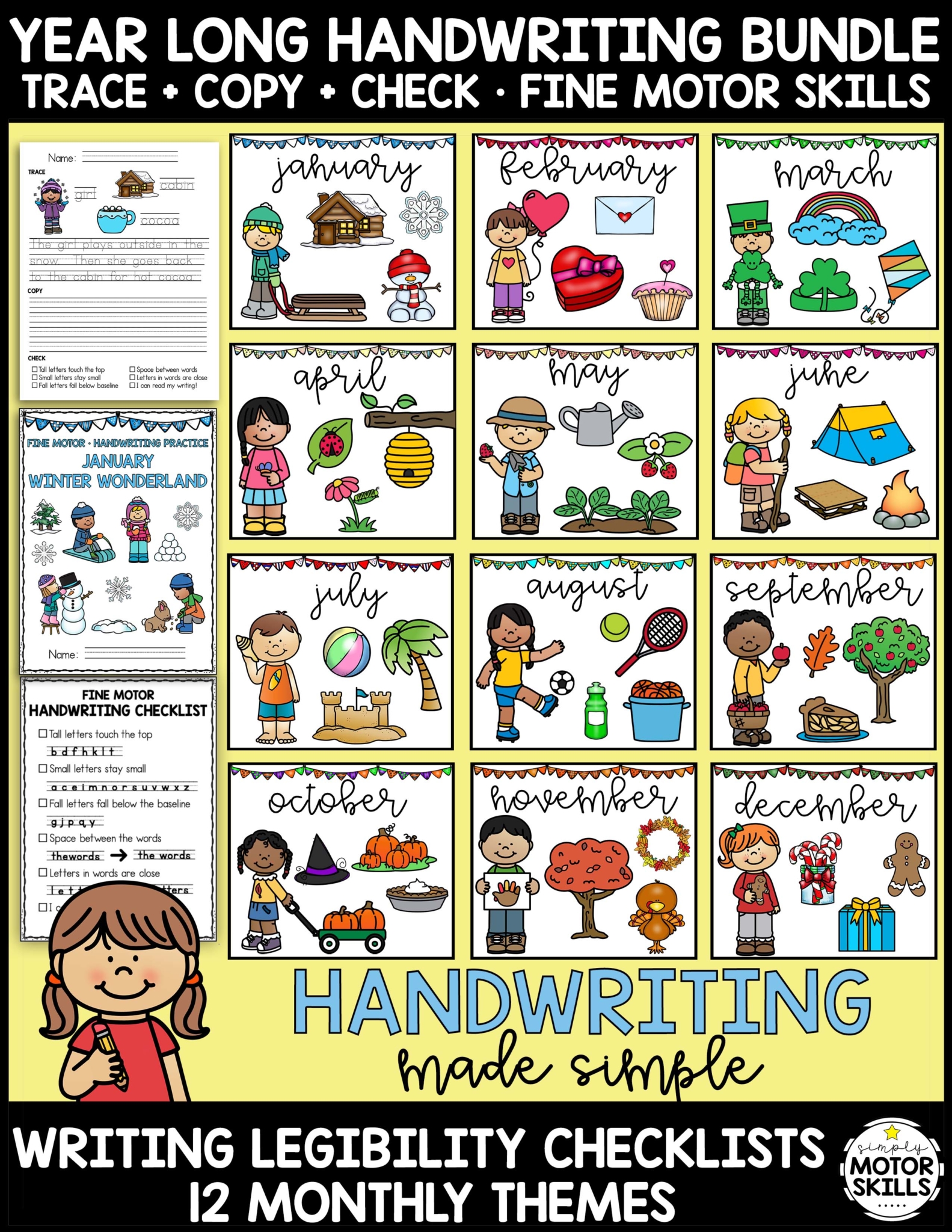
12 Month Fine Motor Handwriting Packets • Trace + Copy + Check
The Importance of Efficient Copying
Efficient copying is marked by two primary elements:
- Speed: The capacity to replicate a notable number of words within a given timeframe.
- Accuracy: Ensuring that the copied content is free of spelling errors or deviations.
However, despite its significance, there has been a noticeable lack of comprehensive studies focused on this task.
Handwriting Speed and Spelling: The Connection
Previous research has hinted at a correlation between handwriting speed and spelling. Two main schools of thought emerge from these studies:
- Graphomotor Control Issues: Some research suggests that children, particularly those with dyslexia, might struggle with graphomotor control, leading to a decline in their handwriting speed.
- Spelling Uncertainties: Alternatively, some scholars believe that the slowness in writing could be attributed to uncertainties in spelling, a challenge often faced by children with specific learning disabilities.
Interestingly, certain studies indicate that orthographic complexities impact handwriting performance more than any visual-motor difficulties, especially in children with dyslexia.
Complexities of Copying a Text
If copying single words is intricate, copying an entire text multiplies the complexities, demanding a slew of cognitive processes to be executed seamlessly. The process includes:
- Reading and storing words or sequences in the phonological buffer.
- Associating these words with their long-term memory representations.
- Efficiently using working memory and controlling attention.
- Undertaking writing processes with precision.
Given that children with SLD might face challenges in reading, retaining information, matching words, writing, and orthographic representation, it stands to reason that these children might find copy tasks particularly challenging.
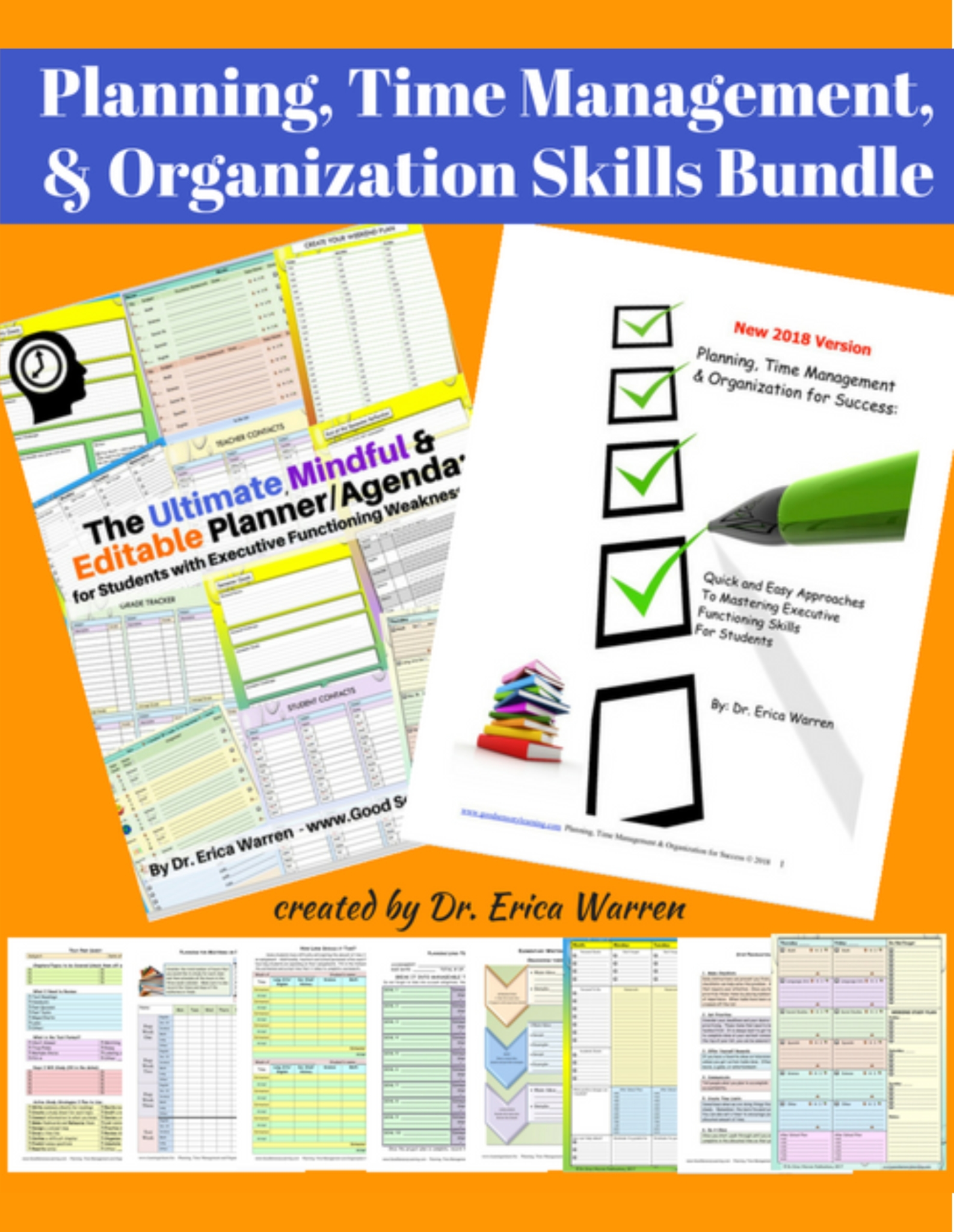
Planning, Time Management, and Organization Skills Bundle
Expressive Writing and Its Relation to Copying
Expressive writing, another pivotal skill in the writing realm, seems unrelated to copying on the surface. However, there’s more to this connection than meets the eye. Factors influencing expressive writing, such as linguistic structure familiarity, short-term memory abilities, and multitasking demands, can also impact efficient text copying, especially under time constraints.
One example is a study that required children to copy a complex text within a tight window of 5 minutes. Given the time pressure, students couldn’t possibly replicate the text letter-by-letter, highlighting the importance of handwriting speed, orthographic skills, and expressive capabilities.
Copying skills, though seemingly simple, are integral for academic success, especially for students with learning disabilities. Understanding the intricacies of this skill, its connection to expressive writing, and the challenges faced by children with SLD can pave the way for better instructional techniques and support mechanisms. As educators and stakeholders, recognizing and addressing these nuances can make a significant difference in the academic journey of many students.
What Does the Recent Research Say About Copy Skills and Learning Disabilities?
Copying text is essential in daily activities, especially in school. A recent study on over 700 Italian students from Grades 6 to 8 sought to understand how students copy texts and if this skill differs between those with Specific Learning Disorders (SLD) and those with Typical Development (TD).
The results of the study indicated the following:
Copying Errors:
- Children with Specific Learning Disabilities struggled more with copying than children with typical development.
- While children with typical development improved their copying speed and accuracy as they progressed through grades, children with specific learning disabilities did not show the same improvement.
- Gender played a role; girls generally made fewer errors than boys.
Components of Writing Skills:
Writing can be broadly understood through three main components:
- Spelling Skills: Accuracy in dictation and expressive writing.
- Handwriting Speed: Speed of writing different prompts.
- Richness of Expressive Writing: Total number of words in expressive writing tasks.
Predictors of Copying Ability:
For children with Typical Development: Age, handwriting speed, spelling skills, and expressive writing all influenced how fast and accurately they copied.
For children with Specific Learning Disabilities: Only handwriting speed and spelling skills determined their copying speed. Spelling skills were the sole predictor of their copying accuracy.
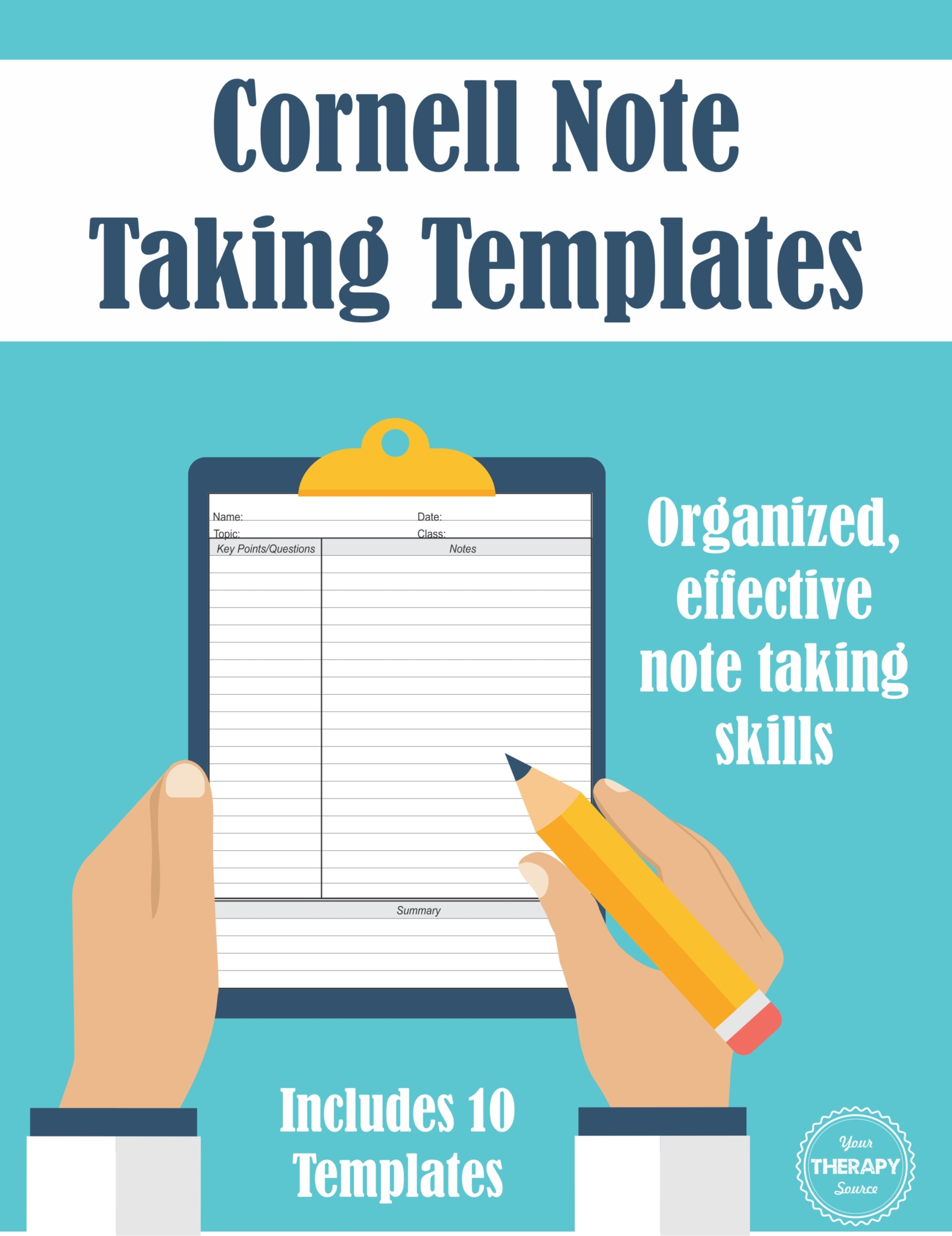
Cornell Note Taking Templates – Organized, Effective Note Taking
Implications for Educators When It Comes to Copy Skills and Learning Disabilities
Here is a summary of the research results on copy skills and learning disabilities:
- Children with specific learning disabilities require more attention in terms of copying skills.
- Grade level doesn’t naturally improve their copying abilities as it does for those with typical development.
- Training should address copying directly, helping students recognize their challenges and teaching them specific strategies.
- Traditional writing assessments, like dictation, have potential biases.
- Using a copying task might offer a clearer assessment of a child’s writing skills.
- Teachers and practitioners should pay more attention to copying skills, especially for the benefit of children with specific learning disabilities.
Strategies to Help All Students with Copy Tasks
In the realm of educational support, copy tasks often play a pivotal role in assessing and enhancing a student’s writing competencies. While seemingly straightforward, the act of accurately copying text involves a myriad of underlying skills, particularly for students with specific learning disorders (SLD). As educators and caregivers seek ways to assist these students, a set of tailored strategies becomes essential. From breaking down the text into digestible sections to employing mnemonic devices for improved recall, these strategies aim to holistically address the varied challenges faced by students, ensuring they master the intricacies of copy tasks while also strengthening related skills such as spelling.
- Chunking Information: Break text into smaller sections for easier copying.
- Highlighting & Underlining: Encourage highlighting difficult sections for focused practice.
- Guided Practice: Offer real-time feedback while the student copies.
- Use of Templates: Provide templates showing correct letter formation and alignment.
- Visual Aids: Use enlarged text or visual cues for guidance.
- Memory Aids: Teach mnemonic devices or rhymes for recalling formations.
- Consistent Workspace: Ensure a distraction-free workspace for better focus.
- Frequent Breaks: Allow regular short breaks to maintain focus.
- Modeling: Demonstrate the correct copying method.
- Practice with Different Mediums: Engage students with various writing tools or surfaces.
- Use of Technology: Utilize tools like voice-to-text as an intermediate step.
- Self-Checking: Encourage students to review and correct their work.
- Positive Reinforcement: Reward effort and improvements.
- Collaborative Copying: Allow students to work in pairs, reading and writing alternately.
- Individualized Instruction: Tailor strategies to each student’s unique needs.
- Spelling Aids: Use tools such as spell checkers or flashcards with frequently misspelled words to improve accuracy when copying.
Understanding how students write and copy is essential, especially for those with learning challenges. Studies show that students with learning disorders need a bit more help in this area. By using specific tools and techniques, teachers can make a big difference. These strategies aren’t just about making copying easier; they’re about making sure every student gets the best chance to learn and succeed.
REFERENCE
Re, A. M., De Vita, F., Cornoldi, C., & Schmidt, S. (2023). Copy Skills and Writing Abilities in Children With and Without Specific Learning Disabilities. Journal of Learning Disabilities, 00222194231157089.
